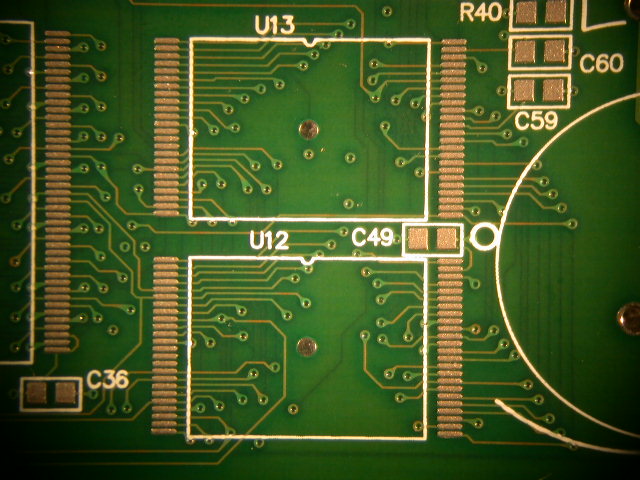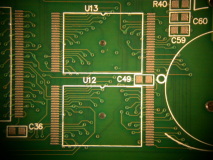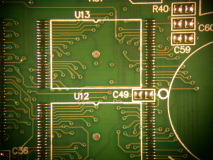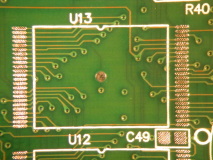SIPAD solid solder deposit
SIPAD (pronounced see-pad) is a value added process developed by Siemens in Germany that pre-loads the surface mount pads on the printed circuit board with solid solder deposits (ssd’s) eliminating the need for screen printing.
SIPAD boards are printed with water soluble solder paste, reflowed into a meniscus without the components in place, thoroughly washed, and then flattened with the patented SIPLAN flattening system. After flattening, the ssd’s are screened with a no clean adhesive flux. Once dried, the tacky flux surface is protected by a release paper and shipped to the assembler.
When ready to assemble, the paper is removed and parts are placed on the ssd’s and slid into place without disturbing the solder. Once in place, the ssd’s can be heated with a rework device, soldering iron, or oven. Once the flattened ssd’s reach the melting temperature they return to their rounded shapes and fuse the components in place with no opens, shorts, or cleaning needed.
SIPAD ssd’s have been shown to have fewer voids than conventional paste and place solder joints giving them a longer life span, shown through thermal cycle testing by the Marshal Space Flight Center in Huntsville AL. In addition, the reflow profile requirements are very relaxed because with SIPAD ssd, you are re-heating solid solder, not fusing tin and lead alloys. This eliminates spattering, solder-balls, opens, shorts, cleaning and voids. Ssd was recently added to the IPC 7093 Specification as a reliable mounting structure for bottom termination components like QFN’s and LGA’s.



